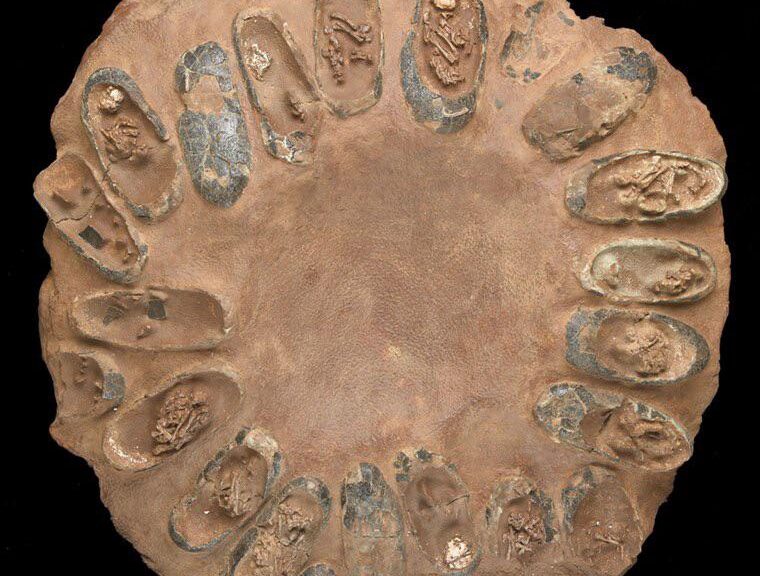Fossil of 67 million-year-old Raptor Dinosaur Found in New Mexico
Experts have discovered dinosaur fossils of what they believe is one of the last remaining species of raptors, a 67-million-year-old known as Dineobellator notohesperus.
The new species of dromaeosaurid — a species of “generally small to medium-sized feathered carnivores” —was discovered in the San Juan Basin, New Mexico, according to a study published in Scientific Reports. D. notohesperus lived during the Cretaceous period, which ended 66 million years ago.
The study’s authors noted a “number of unique features, including vertebrae near the base of the tail that curved inwards, which could have increased Dineobellator’s agility and improved its predation success,” according to a press release.

There is also a gouge mark on the fossil’s sickle-shaped claw, that the researchers believe could have been “inflicted during an altercation with another Dineobellator or other theropod such as Tyrannosaurus rex.”
Phylogenetic analysis of the dinosaur suggests it could be part of the Velociraptorinae subfamily, which also includes velociraptors, famous for their appearance in the “Jurassic Park” movies.
Though small in stature, at approximately 7 feet in length, this carnivorous dinosaur had huge claws and a tail that was flexible at its base, allowing it to increase agility and change direction, according to the study’s lead author, Steve Jasinski.
“Think of what happens with a cat’s tail as it is running,” said Jasinski in a release from the University of Pennsylvania. “While the tail itself remains straight, it is also whipping around constantly as the animal is changing direction.
A stiff tail that is highly mobile at its base allows for increased agility and changes in direction and potentially aided Dineobellator in pursuing prey, especially in more open habitats.”
Dinosaurs were wiped out 65 million years ago by an asteroid that hit Earth in what is now the Yucatan Peninsula in Mexico. It not only wiped out the dinosaurs but also killed nearly 75 per cent of all species on the planet.
It may have also acidified Earth’s oceans after its impact, according to a study published in October 2019.
Another study published in September 2019 compared the impact of the asteroid to the power of 10 billion atomic bombs.
Researchers have uncovered several new species of dinosaurs in recent memory, including the world’s smallest dinosaur, a two-inch bird-like creature.
In early March, researchers published a study that suggested they have found traces of DNA inside a fossilized dinosaur skull.
